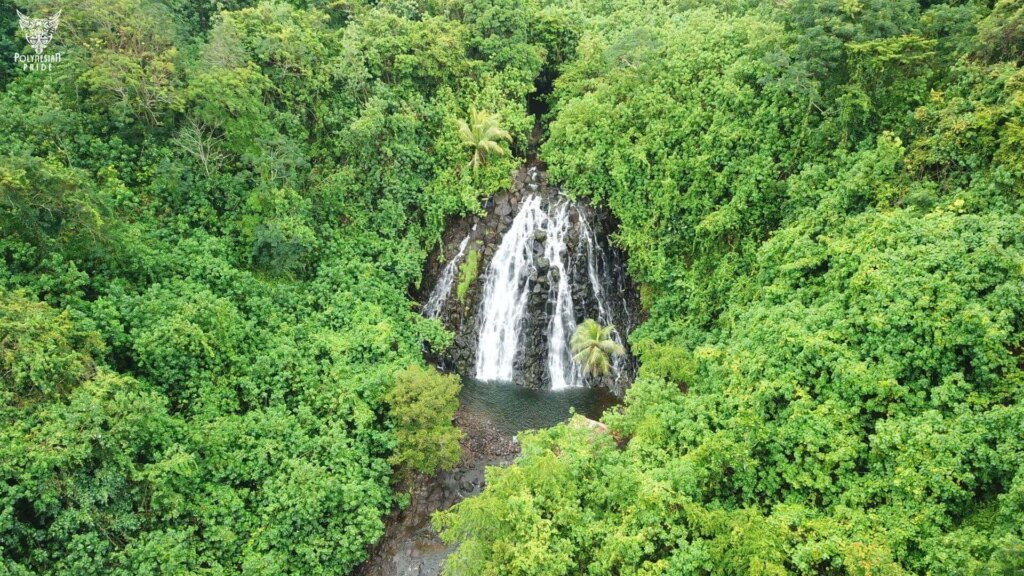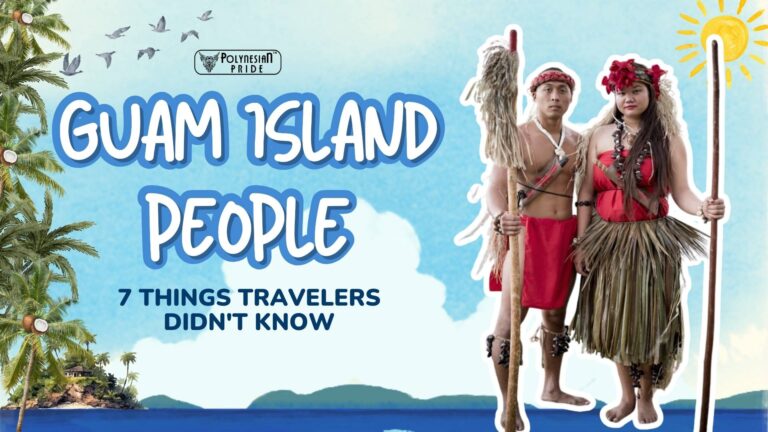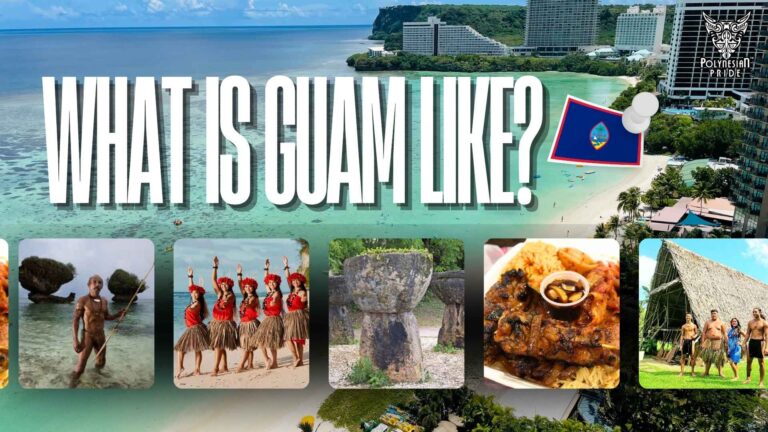Federated States Of Micronesia: A Mystery Gem in The Pacific

INTRODUCTION
The Federated States of Micronesia is a captivating island nation in the Northen Pacific Ocean. Comprising over 600 islands spread across the vast Caroline Islands archipelago, this tropical paradise exemplifies the rich diversity of Oceania. With lush landscapes, vibrant coral reefs, and a unique cultural heritage, the Federated States of Micronesia offers a glimpse into a world where ancient traditions blend seamlessly with modern influences. This comprehensive exploration delves into this fascinating nation’s history, geography, culture, and prospects, highlighting its challenges and opportunities in the 21st century.
I. Geography and Climate
Geographical Overview
The Federated States of Micronesia is located in the western Pacific Ocean. It lies northeast of Indonesia and Papua New Guinea, south of Guam and the Mariana Islands, west of Nauru and the Marshall Islands, and east of Palau and the Philippines. The nation is approximately 2,900 kilometers (1,800 miles) north of eastern Australia, 3,400 kilometers (2,100 miles) southeast of Japan, and about 4,000 kilometers (2,485 miles) southwest of the main islands of Hawaii.

Island Types and Formation
The islands of the Federated States of Micronesia fall into two distinct categories:
- High volcanic islands: Formed by volcanic activity, these islands have larger land masses with diverse ecosystems, exemplified by Pohnpei and Kosrae.
- Low-lying coral atolls: These islands, such as those surrounding ancient submerged volcanoes, are ring-shaped and encircle lagoons, and they feature limited land area and resources.
- Yap Island is an exception. It was formed by continental uplift rather than volcanic activity, resulting in a distinct landscape and soil composition.
Climate Characteristics
The Federated States of Micronesia experiences a tropical climate characterized by high humidity, with mean annual temperatures around 80°F (27°C) and minimal seasonal temperature variation. The average rainfall is about 120 inches (3,000 mm), with Pohnpei receiving over 200 inches (5,000 mm) annually. The climate is influenced by two main seasons: the rainy season (May to November) and the dry season (December to April). Yap, the westernmost state, has a slightly different climate pattern due to its location in the monsoon belt.

Natural Hazards
The Federated States of Micronesia’s geographical location makes it vulnerable to various natural hazards:
- Typhoons (tropical cyclones)
- Coastal erosion
- Sea-level rise due to climate change
- Droughts (particularly affecting atoll islands)
These environmental challenges pose significant risks to the nation’s infrastructure, agriculture, and long-term sustainability.
Ecosystems and Biodiversity
The Federated States of Micronesia’s diverse geography supports various ecosystems, including mangrove swamps, tropical rainforests, and coral reefs. These ecosystems, particularly the diverse marine ecosystems, host many plant and animal species, many of which are endemic. Preserving this biodiversity is vital for environmental and cultural reasons, as numerous traditional practices rely heavily on the natural world.

B. Main Islands
The country consists of four states, each focused on one or more main islands:
Yap Island
Yap Island is located in the western part of the Federated States of Micronesia and is known for its distinctive cultural heritage and traditional practices. The island’s lush, rolling hills and dense tropical forests provide a picturesque backdrop to its unique geological makeup, formed by continental uplift. This distinct feature adds to the island’s allure, attracting tourists interested in its cultural richness and natural beauty.

Chuuk Island
Situated to the east of Yap, it is renowned for its lagoon, one of the largest in the world. This state comprises several high volcanic islands surrounded by a protective barrier reef. The lagoon is dotted with smaller islands and is known for its underwater wrecks from World War II, making it a premier destination for wreck diving enthusiasts. Chuuk’s main island, Weno, serves as the administrative and commercial hub.

Pohnpei Island
The largest and tallest island in the Federated States of Micronesia is further east. It boasts lush rainforests, waterfalls, and diverse flora and fauna. The island’s volcanic origin has created a landscape of rugged mountains and rich, fertile soil ideal for agriculture. Pohnpei is home to Nan Madol, an ancient city built on artificial islets, often called the “Venice of the Pacific.” The state capital, Kolonia, is a bustling town with modern amenities.

Kosrae Island
The easternmost state of The Federated States of Micronesia is known for its pristine environment and well-preserved natural beauty. The island features high volcanic peaks, dense mangrove forests, and clear, coral-rich waters. The island’s economy relies on agriculture, fishing, and a burgeoning eco-tourism sector.
These states, arranged from west to east across the Caroline Islands archipelago, each possess unique geographical features and challenges.

C. History of The Federated States of Micronesia
Pre-Colonial Era

The Federated States of Micronesia islands have been home to people for thousands of years. Archaeological evidence suggests that the first settlers arrived in the region as early as 2000 BCE. These early Micronesians developed sophisticated maritime cultures, mastering navigation and establishing complex social structures across the archipelago.
Each island group developed distinct traditions, languages, and political systems during this pre-colonial period. The people of Yap became known for their unique stone money. At the same time, Pohnpei’s inhabitants constructed the impressive megalithic city of Nan Madol, often referred to as the “Venice of the Pacific.”
Colonial Influences
European explorers gradually discovered the islands of Micronesia during the 16th and 17th centuries, but significant colonial influence began in the 19th century:
- Spanish colonial period (1886-1899)
- German administration (1899-1914)
- Japanese mandate (1914-1945)
- United States Administration (1945-1986)
Each colonial power left its mark, influencing local cultures, economies, and governance structures. The Spanish introduced Christianity, which remains the dominant religion today. The Germans focused on economic development, particularly copra production. The Japanese brought significant infrastructure improvements but also the hardships of World War II.
Trust Territory of the Pacific Islands
Following World War II, the United Nations placed the islands under U.S. administration as part of the Trust Territory of the Pacific Islands. This period saw significant changes in education, healthcare, and governance. The U.S. introduced democratic institutions and prepared the islands for eventual self-governance.

Formation of the Federated States of Micronesia
In 1979, four districts of the Trust Territory – Yap, Chuuk, Pohnpei, and Kosrae – ratified a constitution to become the Federated States of Micronesia. The The Federated States of Micronesia gained independence in 1986 through the Compact of Free Association with the United States, which provides U.S. economic assistance and defense responsibilities in exchange for certain strategic rights.
The Federated States of Micronesia formed a new era for these island communities, uniting them under a single federal government while preserving their distinct cultural identities.
C. Culture and Traditions
Linguistic Diversity
The Federated States of Micronesia is home to a remarkable linguistic tapestry reflecting the diverse origins and cultural identities of its people. While English serves as the official language for government and commerce, the country recognizes eight distinct local languages:
- Yapese
- Ulithian
- Woleaian
- Chuukese
- Pohnpeian
- Kosraean
- Nukuoro
- Kapingamarangi
Each language has unique features and dialects, contributing to the nation’s rich cultural heritage. This linguistic diversity presents challenges and opportunities for education, governance, and artistic preservation.
Traditional Social Structures
Micronesian societies have historically organized themselves around complex social hierarchies and clan systems. These traditional structures continue to play a significant role in modern island society:
- Chiefly systems in Yap and Pohnpei
- Clan-based organization in Chuuk
- Extended family networks across all states
These social structures influence decision-making processes, land ownership, and social obligations. Understanding and respecting these traditional systems is crucial for effective governance and community development.

Cultural Practices and Traditions
The cultural landscape of the Federated States of Micronesia is abundant with traditional practices handed down through generations:
- Navigation and canoe-building
- Traditional medicine and healing practices
- Weaving and handicrafts
- Oral storytelling and mythology
- Traditional dance and music
These practices are culturally significant and essential in sustainable resource management and community cohesion.
Religious Influences
While traditional belief systems continue to influence Micronesian worldviews, Christianity has become the dominant religion across The Federated States of Micronesia:
- Roman Catholicism (approximately 50% of the population)
- Protestantism (approximately 40% of the population)
- Syncretic beliefs blending traditional and Christian elements
Religious institutions throughout this tropical island are crucial in education, healthcare, and community life.

D. Notable Attractions
The Federated States of Micronesia is a treasure trove of natural beauty, historical wonders, and vibrant cultural heritage. Here are some of the most notable attractions:
Nan Madol: The Venice of the Pacific
Located on Pohnpei Island, Nan Madol is an ancient city built on several small artificial islands linked by canals. Often referred to as the “Venice of the Pacific,” this archaeological site is a marvel of engineering and a testament to the ingenuity of its builders. Dating back to the Saudeleur Dynasty, Nan Madol served as the ceremonial and political seat of power, with impressive ruins including stone walls, tombs, and residential areas.

Wreck-Diving in Chuuk Lagoon
For diving enthusiasts, Chuuk Lagoon is a must-visit destination. This underwater paradise is famous for its “Ghost Fleet” of over 60 Japanese warships, planes, and submarines sunk during World War II. The lagoon’s crystal-clear waters provide excellent visibility, making it one of the best wreck diving sites in the world. Divers can explore these historical wrecks, teeming with marine life, coral gardens, and vibrant fish species.

Stone Money of Yap
Yap Island is known for its unique and intriguing stone money, or “Rai.” These large, circular stones were used as currency and hold significant cultural value. Visitors to Yap can see these impressive stones scattered around the island, often still used for traditional transactions and ceremonies. A Yapese culture deeply rooted in quarrying, transporting, and using stone money.

Kosrae’s Lelu Ruins
On the island of Kosrae, the Lelu Ruins offer another captivating historical site. These ruins were once part of a thriving city rivaling Nan Madol’s complexity and significance. The remains of ancient walls, tombs, and dwellings tell the story of Kosrae’s past rulers and their sophisticated society.

Pohnpei’s Sokeh’s Ridge
For those who enjoy hiking, Sokeh’s Ridge on Pohnpei Island offers breathtaking views. This challenging hike rewards you with panoramic vistas of the island and the surrounding ocean. Along the way, you’ll encounter remnants of Japanese military installations from World War II, adding a historical element to your trek.

E. Discover from Land to Sea
The Federated States of Micronesia offers many adventure activities amidst its stunning natural landscapes from land to sea.
Island Trekking Adventures
This nation’s compacted ecosystems facilitate immersive island trekking experiences. Travelers can traverse ancient stone paths on Yap or enjoy panoramic mountain views amidst vibrant greenery. The absence of predatory animals ensures that island activities are safe and enjoyable for the whole family, allowing visitors to marvel at the shimmering foliage and unique biodiversity of the Caroline Islands.
Bird and Flora Watching
The Federated States of Micronesia has a rich avian diversity, including indigenous species like the nightingale reed-warbler, Truk monarch, and Kosrae greater white-eye. Chuuk Island, in particular, has become renowned among bird watchers for its unique bird species and vibrant populations of flying foxes (fruit bats). Guided tours offer opportunities to observe these fascinating creatures in their natural habitats, from bustling bird colonies to tranquil fruit bat roosts.
The islands also host over six hundred species of tropical shrubs, flowers, and trees, such as hibiscus, Hong Kong orchids, and coconut palms, contributing to the Federated States of Micronesia’s unparalleled botanical richness.

Sport Fishing
The Federated States of Micronesia boasts some of the world’s best sport fishing opportunities, drawing enthusiasts from around the globe. Whether you’re a novice or an avid angler, the waters around the Federated States of Micronesia are rich in diverse fishing experiences. From deep-sea fishing expeditions to casting from shorelines and trolling adventures, there’s something for every fishing enthusiast. Fishing tournaments are famous throughout Micronesia, welcoming visitors to participate or enjoy the excitement from the sidelines. Local guides and fishing tour operators offer expert guidance to ensure a memorable day on the water.

Surfing and Kite Surfing
Pohnpei and Kosrae islands are renowned among surfers for their uncrowded waves and perfect reef breaks. Both beginners and seasoned surfers flock to these islands to experience world-class surfing conditions. Professional surfers often visit Pohnpei’s renowned right-hand waves, a favorite subject for surf magazines and filmmakers. Kite surfing has also gained popularity in the Federated States of Micronesia, particularly during the peak season from October to March. Surf clubs and operators provide access to prime surfing locations via boat, ensuring enthusiasts make the most of their time on the waves.
Canoe & Kayak Adventures
Exploring Federated States of Micronesia’s mangrove forests via canoe or kayak offers a serene and intimate encounter with nature’s wonders. These ancient passages reveal a rich ecosystem of rare avian fauna and vibrant marine life beneath the calm waters. From giant monitor lizards to exotic bird species like the Pacific reef heron and red-breasted nectar-eater, the mangrove channels provide a glimpse into Micronesia’s ecological diversity. Guided tours enhance the experience, providing insights into local conservation efforts and the cultural significance of these pristine environments.

CONCLUSION
The Federated States of Micronesia is a unique tropical paradise in the Pacific, with a rich history, diverse culture, and stunning natural beauty. By leveraging its unique cultural heritage, natural resources, and strategic partnerships, this nation is ready to navigate the complexities of the modern world while preserving its identity and improving the well-being of its people. The Federated States of Micronesia can continue to thrive as a beacon of resilience and harmony in the Pacific region through collaboration, innovation, and a commitment to sustainable development.
FAQs
Where is The Federated States Of Micronesia?
The Federated States of Micronesia consists of 607 islands spread across 2,900 km in the Caroline Islands archipelago, located east of the Philippines. Collectively, these islands cover a total area of 702 km2.
What is the capital of The Federated States Of Micronesia?
Palikir, located on the island of Pohnpei, serves as the capital of the Federated States of Micronesia.
What Are The Federated States Of Micronesia Known For?
Micronesia is best known for its strategic location in the Pacific Ocean, making it a significant site for military bases and nuclear tests, particularly by the United States. In 1946, the United States conducted atomic bomb tests over the Bikini and Enewetak atolls in the Marshall Islands, highlighting the region’s historical role in global geopolitics and nuclear history.
How can I visit The Federated States Of Micronesia?
Visitors typically arrive in The Federated States Of Micronesia by flying into international airports in major cities such as Pohnpei and Chuuk. Before planning your trip, it’s advisable to check visa requirements and travel advisories.

I am Leilani Miller – I research focusing on Vanuatu – volcanic landscapes, blue holes, coral reefs & rainforests. I have over five years of experience researching and sharing insights on tourism and environmental activism. Explore and experience without limits through my latest article.
Contact information:
Email: [email protected]
Tel: +1 (808) 555-1528






